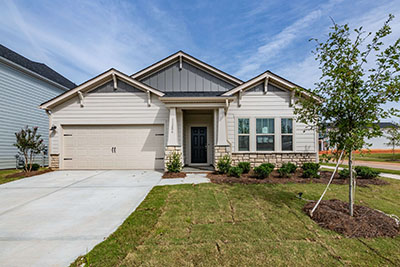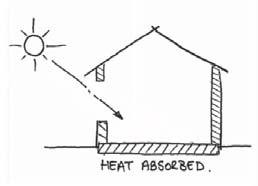A $65 million Department of Energy (DOE) program will support technologies enabling energy-efficient buildings to interact with one another and the electric grid, potentially lowering greenhouse gas emission levels and improving power infrastructure. Energy Secretary Dan Brouillette announced the funding commitment last month during an Electric Power Research Institute (EPRI) gathering in Charlotte, N.C., where attendees toured a Meritage Homes Corp. property exhibiting thermal and battery storage capacity, solar heat pumps, premium insulation and advanced appliances.

Along with EPRI and Duke Energy, the Scottsdale, Ariz.-based builder will test how home-to-grid communication can augment power utilities’ peak demand management. Earlier this year, the DOE Office of Energy Efficiency and Renewable Energy sought input from organizations that could “demonstrate and evaluate the capacity of energy-efficient buildings to interact with one another and the grid to provide greater degrees of demand flexibility at scale.”
“The genesis of this project with Meritage Homes and Duke Energy was 2017, when EPRI researchers decided to examine if thermal storage could be used in buildings as a lower cost means of providing grid stability compared to battery storage,” explains EPRI President Arshad Mansoor. “Some of the unique technologies evaluated over this period include Phase Change Materials in the building envelope, advanced construction technologies with high thermal mass walls, and high efficiency variable capacity heat pump systems, all of which have the potential to provide grid flexibility while reducing energy burden.”
“As our nation’s energy system continues to undergo dramatic transformations, there is a growing need for solutions that integrate and optimize all of our energy resources on the grid to provide Americans with the most reliable and affordable electricity possible,” says Secretary Brouillette. “DOE will broaden its capability to evaluate and demonstrate the growing flexibility of one such solution—smart, grid-interactive, efficient buildings—to best serve the needs of occupants and the grid, while reducing energy consumption overall.”
“This is an important step toward decarbonization,” adds Mansoor. “One-third of our carbon emissions comes from the electric power industry. Another third comes from buildings, and the final third comes from transportation. About 51 percent of total energy use in buildings is for heating and cooling.
“More of our economy is relying on electricity, which must be generated with cleaner forms of energy,” he continues. “To increase the amount of clean energy on the grid, we have to improve grid resilience, which requires new technology that allows utilities to better manage resources, but also technology that creates a more interactive grid for consumers.”
“Efficiency is top of mind for many new homeowners to address energy costs. Meritage Homes builds premium and affordable quality entry-level and first move-up homes, 100 percent of which are energy-efficient, safer, and healthier than traditional homes. We are the industry leader in energy-efficient homebuilding and our homes all include a standard package of features to reduce energy consumption,” observes Meritage Homes Chairman Steve Hilton.
TEMPERING HEATING, COOLING SPIKES


The European Cement Association-aligned Concrete Initiative’s new document, “Thermal Mass: The smart approach to energy performance,” details a design strategy likely to surface in projects backed by the Department of Energy’s new funding program.